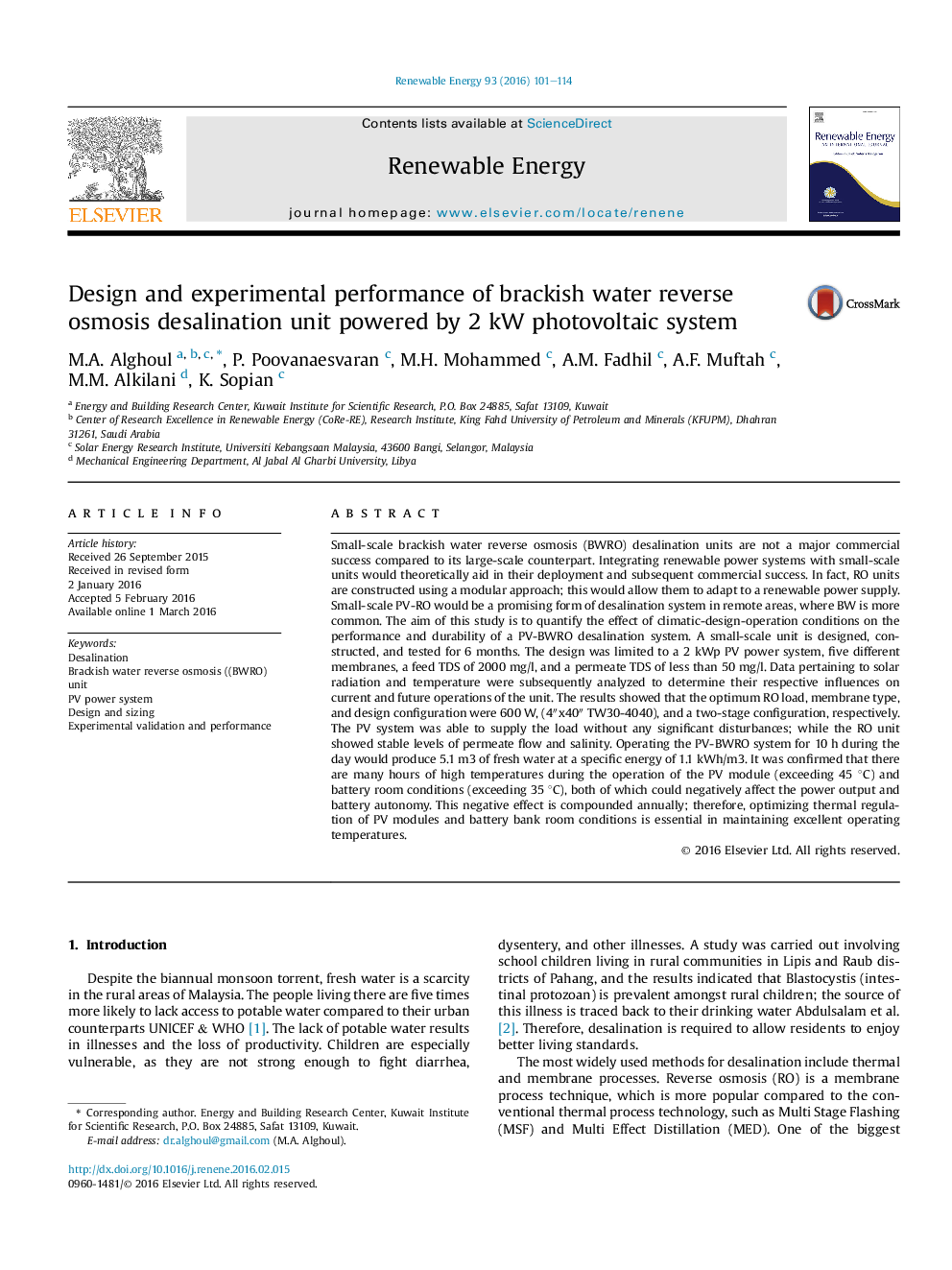| کد مقاله | کد نشریه | سال انتشار | مقاله انگلیسی | نسخه تمام متن |
|---|---|---|---|---|
| 299753 | 512445 | 2016 | 14 صفحه PDF | دانلود رایگان |
• BWRO test unit powered by 2 kWp PV power system was designed, constructed and tested for six months.
• Solar radiation/temperature data were subsequently analyzed to determine their influence on current/future operations.
• Operating the PV-BWRO system for 10 h during daytime, 5.1 m3 of fresh-water would be produced @ 1.1 kWh/m3.
• There are significant numbers of hours involving high temperatures of the PV module and battery room.
• High attention to the temperature regulation of PV modules/battery bank room conditions is essential.
Small-scale brackish water reverse osmosis (BWRO) desalination units are not a major commercial success compared to its large-scale counterpart. Integrating renewable power systems with small-scale units would theoretically aid in their deployment and subsequent commercial success. In fact, RO units are constructed using a modular approach; this would allow them to adapt to a renewable power supply. Small-scale PV-RO would be a promising form of desalination system in remote areas, where BW is more common. The aim of this study is to quantify the effect of climatic-design-operation conditions on the performance and durability of a PV-BWRO desalination system. A small-scale unit is designed, constructed, and tested for 6 months. The design was limited to a 2 kWp PV power system, five different membranes, a feed TDS of 2000 mg/l, and a permeate TDS of less than 50 mg/l. Data pertaining to solar radiation and temperature were subsequently analyzed to determine their respective influences on current and future operations of the unit. The results showed that the optimum RO load, membrane type, and design configuration were 600 W, (4″x40″ TW30-4040), and a two-stage configuration, respectively. The PV system was able to supply the load without any significant disturbances; while the RO unit showed stable levels of permeate flow and salinity. Operating the PV-BWRO system for 10 h during the day would produce 5.1 m3 of fresh water at a specific energy of 1.1 kWh/m3. It was confirmed that there are many hours of high temperatures during the operation of the PV module (exceeding 45 °C) and battery room conditions (exceeding 35 °C), both of which could negatively affect the power output and battery autonomy. This negative effect is compounded annually; therefore, optimizing thermal regulation of PV modules and battery bank room conditions is essential in maintaining excellent operating temperatures.
Journal: Renewable Energy - Volume 93, August 2016, Pages 101–114
